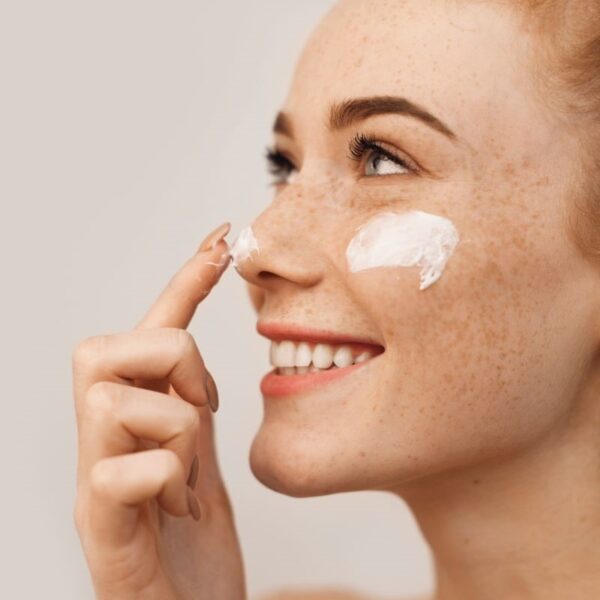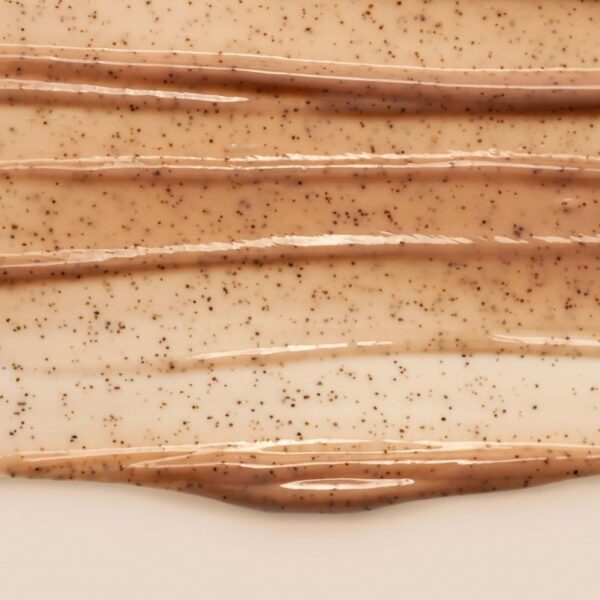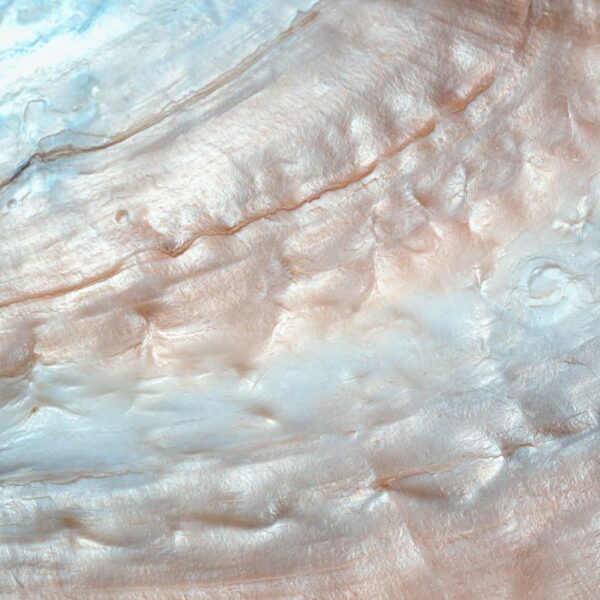In the world of personal care and cosmetics, the utilization of naturally sourced and biocompatible ingredients has seen substantial growth in recent years. One such ingredient that has attracted considerable interest is hydroxyapatite. This compound has many applications, primarily for its benefits in oral health but also increasingly in other personal care contexts.
Dental enamel is composed mainly of a partially carbonated form of the calcium phosphate related to the hexagonal hydroxyapatite mineral hydroxyapatite (3Ca₃(PO₄)₂·Ca(OH)₂), which accounts for about 98% of its composition. It is the most mineralized tissue of the human body. In dentin, the inorganic material represents 70 wt.%. X-ray energy dispersive spectroscopy (EDS) analysis of enamel and dentin indicated small quantities of other elements such as Na, Cl, and Mg.
Hydroxyapatite (HA) is the main component of enamel, which gives an appearance of bright white and eliminates the diffuse reflectivity of light by closing the tiny pores of the enamel surface. Hydroxyapatite has long been among the most studied biomaterials in the medical field for its proven biocompatibility and its main constituent of the mineral part of bone and teeth. Hydroxyapatite is also an essential source of calcium and phosphate, which is very important for remineralizing demineralized enamel areas.
This article will explore the chemical nature of hydroxyapatite, its production methods, and its applications in the personal care industry, with particular attention to formulation considerations and safety regulations.
What is Hydroxyapatite?
Hydroxyapatite(HAP), or crystalline calcium phosphate, is the main inorganic constituent of human bones and teeth. It is a naturally occurring mineral form of calcium apatite with the formula Ca₅(PO₄)₃(OH), and its primary appeal lies in its remarkable biocompatibility. Still, Ca₁₀(PO₄)6(OH)₂ is usually written to denote that the crystal unit cell comprises two entities. Hydroxyapatite is the hydroxyl end member of the complex apatite group.
The OH− ion can be replaced by fluoride, chloride, or carbonate, producing fluorapatite or chlorapatite. Due to its close similarity to the mineral part of complex tissues in mammals, hydroxyapatite is essential in many biological applications, including the personal care industry.
Hydroxyapatite can be synthesized via several methods, such as wet chemical deposition, biomimetic deposition, sol-gel route (wet-chemical precipitation), or electrodeposition. A damp chemical precipitation reaction can prepare the hydroxyapatite nanocrystal suspension.
Source: Imgur
How is Hydroxyapatite Produced?
The production of hydroxyapatite typically involves the reaction of calcium with phosphate under controlled conditions. It can be synthesized through several methods, including precipitation, hydrolysis, sol-gel, and hydrothermal methods. Precipitation is the most common method due to its simplicity, cost-effectiveness, and ability to produce high-purity hydroxyapatite.
It involves a chemical reaction of calcium salts (like calcium nitrate or hydroxide) with phosphate salts (like diammonium hydrogen phosphate). The conditions, such as temperature, pH, and stirring speed during the reaction process, are meticulously controlled to produce hydroxyapatite’s desired crystal size, morphology, and purity.
Use of Hydroxyapatite in the Personal Care Industry
- Odor quenching: Hydroxyapatite binds to the odorous chemicals and forms complexes with these materials. Examples of other such ingredients include zinc ricinoleate and certain metal oxides, such as zinc oxide. Hydroxyapatite has also been found to be effective at binding to odorous chemicals.
- Anticaries component: These prevent cavities by strengthening the tooth enamel and remineralizing tooth decay. Two main types of anticavity actives are available on the market: fluoride and non-fluoride components, from which the fluoride-containing products’ market share is about 95%. Fluoride components include sodium monofluorophosphate, sodium fluoride, and stannous fluoride. However, in a study, it has been concluded that hydroxyapatite toothpaste is equivalent or non-inferior to fluoride toothpaste concerning remineralization of initial caries lesions and prevention of carious lesion development.
- The Mechanism of action: Fluorides initiate and speed up remineralization and slow down demineralization. Saliva can supply the enamel with lost minerals, e.g., calcium and phosphate ions, when the pH is above 5.5 (to a certain extent). However, this process is enhanced when fluoride is present in the saliva. In the presence of fluoride (from water or toothpaste), fluorohydroxyapatite forms in addition to hydroxyapatite, creating a supersaturated solution outside the enamel. Therefore, calcium and phosphate ions are more efficiently recovered if fluoride is present in the saliva and bacterial biofilm. In addition, fluorohydroxyapatite is less soluble than hydroxyapatite and is, therefore, more resistant to subsequent demineralization when acid is challenged. As mentioned earlier, keeping the fluoride ions stable is very important. If insoluble salts are formed, the anticaries activity is lost. Hydroxyapatite is currently being explored as a fluoride-free anticaries agent.
Applications in Personal Care Industry
| Function | Applications |
| Anti-Caries | Caries (otherwise known as tooth decay or cavities) are characterized by brown spots or holes on the chewing surface of the teeth. Cavities usually do not hurt unless they grow substantially, affect the nerves, or cause a tooth fracture. However, untreated tooth decay can destroy the inside of the tooth (pulp), leading to tooth loss. Hydroxyapatite is used to prevent caries, strengthen the tooth enamel and slow down the formation of an invisible, sticky film (called plaque) that leads to caries formation, and restore and harden the teeth. These ingredients are available in all oral care products, including toothpaste, gel, and mouthwash. |
| Remineralization | Hydroxyapatite toothpaste contains hydroxyapatite particles in a micro- or nanocrystalline form that have been shown to deposit and restore demineralized enamel surfaces. Hydroxyapatite remineralizes teeth by replacing lost minerals such as calcium and phosphates caused by high levels of acid or bacteria. Remineralization occurs when filling the microscopic cracks in our teeth created by tooth decay and used in our saliva to do just that for our teeth. |
| Tooth Whitening | There has been a need for safer whitening agents in toothpaste. The ingredients should not be abrasive but, at the same time, significantly whiten teeth. One of these ingredients is hydroxyapatite. Biomimetic hydroxyapatite particles are white opaque particles that immediately repair surface enamel defects. In the long term, this active ingredient has been shown to remineralize tooth surfaces, reducing caries, tooth sensitivity, and dentin hypersensitivity. The deposition of hydroxyapatite particles on the enamel surface not only masks the yellow appearance of teeth but also effectively removes extrinsic stains and plaque. |
Product Examples
| Type | Examples |
| Oral Care | Dentifrices, Toothpaste |
| Color Cosmetics | Foundation, Concealer |
Properties of Hydroxyapatite
| Appearance at 25 °C | Colorless, white, gray, yellow, yellowish-green |
| pH (10% Aqueous) | 5-8.2 |
| Molecular Weight (g/ml) | 502.31 g/mol |
| Density at 18°C (g/cm3) | 3.076 g/cm3 (Temp: 18 °C) |
| Solubility | Insoluble (or practically insoluble) in water |
| Bulk Density | 3.05 g/cm3 |
| Melting Point | 1100 °C |
| Odor | Odorless |
| Shelf Life | 12-18 months |
| Storage Conditions | Store in well-filled, tightly sealed containers in a cool, dry place. Ideal Storage Temperature- 2-8°C |
Typical Formulations
Luminous Finish Foundation Stick
This creamy and emollient foundation stick is perfect for those who prefer a dewy and healthy finish with its my-skin-but-better effect.
ND Pigmentary dispersions in Diisostearyl Malate provide shade and a healthy finish. Neosolue™- DiSM and HL7M5 contribute to the emollience of the formulation. PM WAX 82 structures the stick. KOBOGUARD® 5400 CCT aids in wear. A combination of Hydroxyapatite, MSS-500W, and FLORITE PS-10 improves payoff and feel and adds a soft focus effect. KTZ® CLASSIC WHITE contributes to the luminous finish.
Here is an example of a table with hydroxyapatite and the % weight of ingredients:
Hydroxyapatite Formulation Phases
| PHASE | INCI Name | Trade Name | Supplier | % Wt. |
| A | Diisostearyl Malate | Neosolue™-DiSM | Nippon/KoboProducts | 34.60 |
| Nippon/KoboProducts | Eutanol® G | BASF | 23.50 | |
| Polyethylene (And) Microcrystalline Wax | PM WAX 82 | Kobo Products | 9.00 | |
| Hydrogenated Polyisobutene (And) Silica | HL7M5 | Kobo Products | 5.00 | |
| Hydrogenated Coco-Glycerides | Softisan® 100 | Condea Chemie | 4.00 | |
| Hydrogenated Polycyclopentadiene (And) Caprylic/Capric Triglyceride | KOBOGUARD® 5400 CCT | Kobo Products | 2.00 | |
| Tocopheryl Acetate | DSM DL-α-Tocopheryl Acetate | DSM | 0.1 | |
| B | Titanium Dioxide (And) Diisostearyl Malate (And) Isopropyl TitaniumTriisostearate | ND65U | Kobo Products | 12.60 |
| Diisostearyl Malate (And) Iron Oxides (CI 77492) (And) IsopropylTitanium Triisostearate | ND50EY | Kobo Products | 2.23 | |
| Diisostearyl Malate (And) Iron Oxides (CI 77491) (And) IsopropylTitanium Triisostearate | ND65ER | Kobo Products | 0.34 | |
| Iron Oxides (CI 77499) (And) Diisostearyl Malate (And) IsopropylTitanium Triisostearate | ND70EB | Kobo Products | 0.13 | |
| C | Hydroxyapatite | Hydroxyapatite | Soda Nikka Co.,Ltd.-JPY | 0.5 |
| Calcium Silicate | FLORITE PS-10 | Kobo Products | 1.0 | |
| Silica | MSS-500W | Kobo Products | 5.0 | |
| Mica (And) Titanium Dioxide | KTZ® CLASSIC WHITE | Kobo Products | 0.2 | |
| Total | 100% | |||
Formulation Procedure
- Combine ingredients in Part 1 and heat to 85°C during propeller mixing.
- Add Part 2 to the main beaker while mixing until the color is fully developed and uniform. Maintain 85°C.
- Slowly sprinkle Part 3 and continue mixing until the powders are completely dispersed.
- Pour into components at 85°C.
Hydroxyapatite Formulation Considerations
- During the manufacture of oral care products, it can be easily included in water-based products and is stable at high temperatures.
- Continuous mixing should be added after emulsion formation during the cooling process in emulsion-type products.
Hydroxyapatite Safety & Regulatory Concerns
FDA Information: Hydroxyapatite is not FDA Approved. The SCCS considers hydroxyapatite (nano) safe when used at concentrations up to 10% in toothpaste and up to 0.465% in mouthwash.
| FDA Information | Hydroxyapatite is generally recognized as safe for personal care products. It is approved as a food additive by the U.S. Food and Drug Administration (FDA), reflecting its safety for oral care applications. |
| Cosmetic Ingredient Review (CIR) Information | The Cosmetic Ingredient Review (CIR), an industry-funded panel that assesses the safety of ingredients used in cosmetics, has reviewed hydroxyapatite and deemed it safe as used in cosmetic formulations. However, they highlighted the need for manufacturers to avoid creating inhalation exposure, especially when using hydroxyapatite nanoparticles. |
Identification Numbers
| CAS Number | 1306-06-5 |
| EC Number | 215-145-7 |
| ELINCS Name | Hydroxylapatite (Ca5(OH)(PO4)3) |
| ELINCS Number | 215-145-7 |
The maximum usage level of hydroxyapatite in the personal care industry as per the Scientific Committee on Consumer Safety (SCCS) is as follows.
| Category | Usage Level |
| Toothpaste, Dentifrices | Up to 10% |
| Mouthwash products | Up to 0.465% |
| Skincare products | Up to 5% |
Source: Europa.EU
Health Effects of Hydroxyapatite
- The SCCS has concluded hydroxyapatite in leave-on and rinse-off dermal and oral cosmetic products is safe at the reported maximum concentrations and specifications.
- However, the SCCS cannot conclude the safety of Hydroxyapatite composed of rod-shaped nanoparticles in oral-care cosmetic products due to insufficient data on the genotoxic potential of the material.
- The SCCS also has scientific concerns regarding using Hydroxyapatite in a needle-shaped form in cosmetic products and has concluded that there is a basis for concern about potential toxicity.
- The SCCS is ready to assess any evidence to support the safe use of Hydroxyapatite in cosmetic products.
- Although hydroxyapatite (nano) is also indicated for breath spray, no data was provided to allow assessment of consumer safety from inhalation exposure. Therefore, this opinion does not apply to sprayable products that might expose the consumer’s lungs to nanoparticles by inhalation.
Fun Facts About Hydroxyapatite
- Teeth can last throughout an individual’s lifespan, almost in continuous use, only because their exterior, the exposed surface, is ‘enamel.’ This white outer layer is an approximately 2-3 mm thick coating consisting predominantly (98%) of minerals based on Ca5(PO4)3OH, hydroxyapatite with various impurities. It is the hardest material in the body and prevents the tooth from wearing away under chewing pressure.
- The calcium in our enamel, which consists of hydroxyapatite, starts dissolving below pH 5.5. The pH of fruit juices and many carbonated drinks is known to be below this pH. Extensive consumption of such beverages may change the pH in the oral cavity and facilitate the chemical dissolution (i.e., demineralization) of dental calcium and phosphate.
- Up to 50% by volume and 70% by weight of human bone is a modified form of hydroxyapatite, a bone mineral.
Additional Resources
- Apatite-Forming Ability of Borosilicate Bioactive Glasses
- What Is Hydroxyapatite? Here’s Why It’s Important for Your Teeth
- What Is Hydroxyapatite Toothpaste?
- Scientific Committee on Consumer Safety – Hydroxyapatite in Cosmetic Products
- Scientific Committee on Consumer Safety – Opinion on Hydroxyapatite in Cosmetic Products
- Influence of Hydroxyapatite Nanoparticles on Mechanical Properties of Dental Composites
- EU Scientific Committee on Consumer Safety Releases Preliminary Opinion on Hydroxyapatite in Cosmetic Products
- FDA – 510(k) Information Needed for Hydroxyapatite-Coated Orthopedic Implants
- NCBI – The Deposition of Hydroxyapatite Particles in the Human Body
- DOI – Clinical study on hydroxyapatite-coated orthopedic implants
- Paszynska, E., Pawinska, M., Gawriolek, M. et al. Impact of toothpaste with microcrystalline hydroxyapatite on the occurrence of early childhood caries: a 1-year randomized clinical trial. Sci Rep 11, 2650 (2021).
- Pepla E, Besharat LK, Palaia G, Tenore G, Migliau G. Nano-hydroxyapatite and its applications in preventive, restorative and regenerative dentistry: a literature review. Ann Stomatol (Roma). 2014 Nov 20;5(3):108-14. PMID: 25506416; PMCID: PMC4252862.
- Coelho, C.C., Grenho, L., Gomes, P.S. et al. Nano-hydroxyapatite in oral care cosmetics: characterization and cytotoxicity assessment. Sci Rep 9, 11050 (2019).
- Amaechi, B.T., AbdulAzees, P.A., Al Shareif, D.O. et al. Comparative efficacy of hydroxyapatite and a fluoride toothpaste for preventing and remineralizing dental caries in children. BDJ Open 5, 18 (2019).




